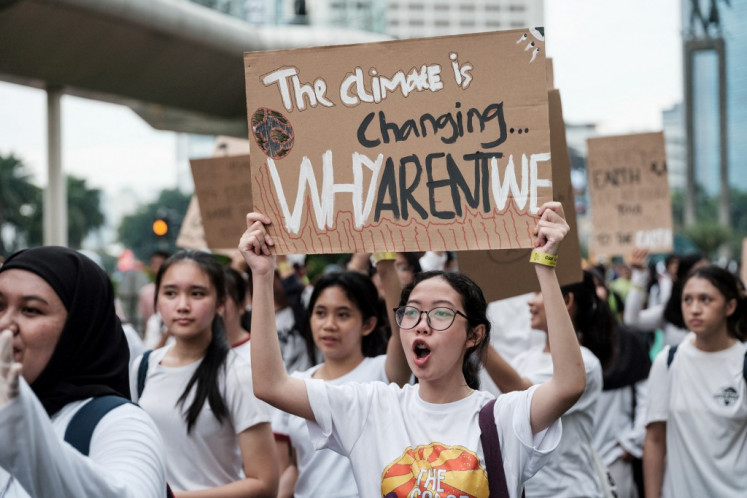Indonesia may see weak industrial growth this year
With looming challenges, the countryâs manufacturing industry may see another tough year, with slower growth compared to previous years
Change Size

W
ith looming challenges, the country's manufacturing industry may see another tough year, with slower growth compared to previous years.
Contraction in manufacturing activities was evident in the final quarter of 2014, as suggested by a drop in the HSBC Indonesia Purchasing Managers' Index (PMI) ' which measures the health of the manufacturing sector ' to a record low in more than three years on declining output and new orders.
Manufacturing activities may weaken again this year as domestic consumption might continue to shrink on weaker purchasing power. Meanwhile, the overseas market is not expected to recover
anytime soon.
Other notable challenges come as a result of the depreciation of rupiah against the US dollar, rising labor wages and electricity costs.
Amid the variety of factors that may weigh on the country's industrial performance, the government has targeted the non-oil and gas manufacturing industry to expand by 6.1 percent, up from the 5.7 percent estimated for last year, a level which if not reached would cause its growth to plunge to its slowest pace in three years.
Growth would primarily be driven by industrial firms that process agriculture and mining commodities into semi-finished and finished goods, according to Industry Ministry secretary-general Ansari Bukhari.
'The government will carry out some quick wins to facilitate this growth, such as through the massive development of industrial estates and improvement of infrastructure, including energy and electricity,' Anshari said.
In addition to the downstream industries, acceleration of the manufacturing industry will also be supported by sectors whose output is largely absorbed by domestic consumers, such as food and beverage and textile, according to the ministry's estimate.
Among the bad performers are some sectors grouped under base manufacturing industrial clusters, such as cement, fertilizers and base metal, of which consumption will likely shrink in line with the country's economic slowdown.
Another key factor that will help industrial growth is the realization of direct investment, which this year is expected to speed up, among others, construction of smelters and refineries to process mineral ores, the ministry has forecast.
Investment Coordinating Board (BKPM) chief Franky Sibarani said based on the trend seen until the third quarter of last year, investment in the manufacturing industry climbed significantly and such an upward movement would persist throughout this year.
'Up to the third quarter [of 2014], the investment share in the manufacturing sector was bigger compared to a year earlier. I am optimistic that the manufacturing industry will pick up the pace in 2015,' he said.
In the first three quarters last year, realized manufacturing investment represented 43.3 percent of the overall figure of Rp 324.7 trillion (US$25.68 billion). In 2013, it only accounted for 27.7 percent of the entire investment amount of Rp 398.6 trillion.
In the January-September period, several manufacturing sectors saw realized investment exceed expectations, creating potential to spur industrial growth this year, according to the agency's estimation.
The sectors comprise food industry, non-metal mineral, base metal, metal products, machinery and electronics, base chemical, chemical products and pharmaceuticals, paper and paper products and printing.
Center of Reform on Economics (CORE) Indonesia executive director Hendri Saparini said the government might need to provide specific incentives, particularly fiscal facilities, to boost industrial growth this year.
'The government needs to map out what industrial sectors it wants to encourage and lay out specific incentives necessary to help them grow optimally,' she said, referring to how the export-oriented industry might require different incentives from the import-substitute industry.









